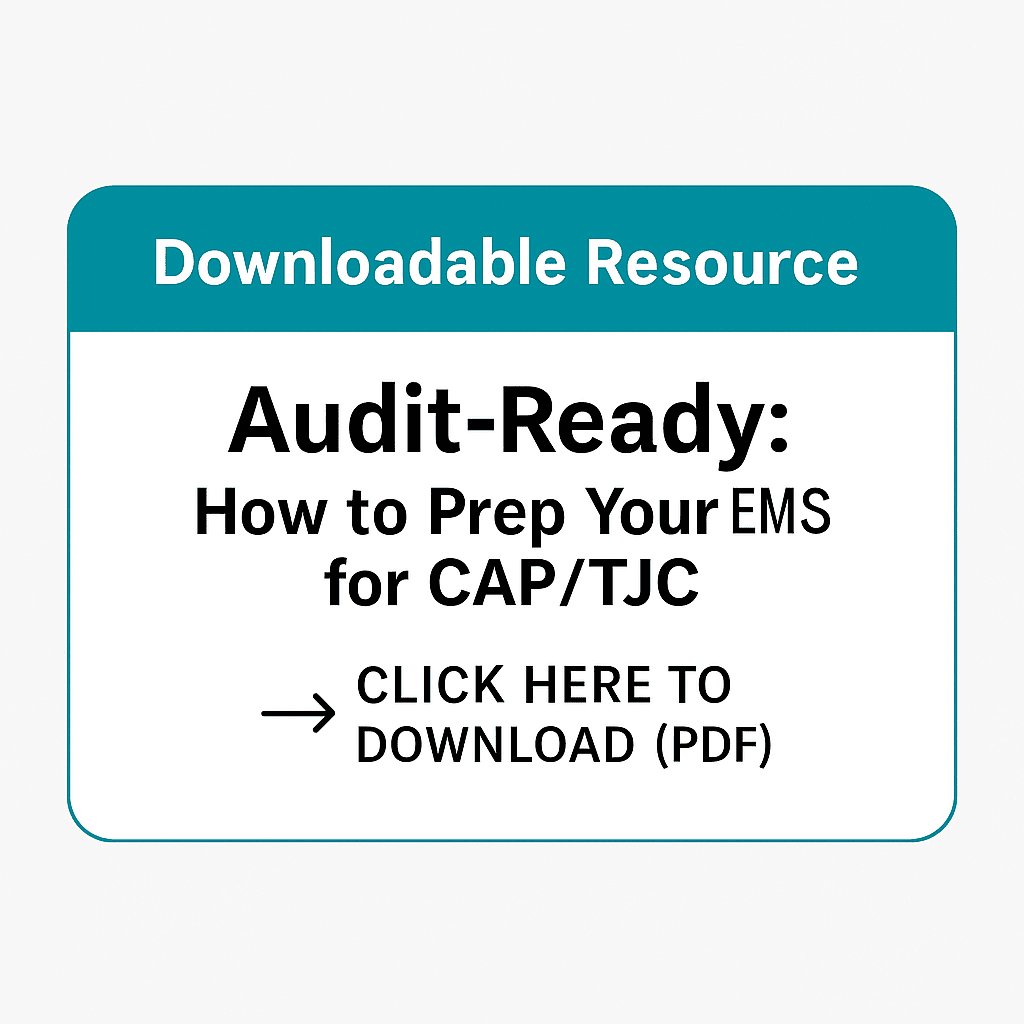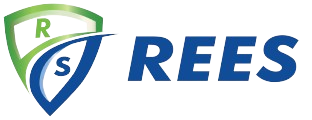Regulatory Compliance
EMS Readiness for CAP and TJC Inspections: 14-Day Prep Checklist
Author: Gagan Kaur
Aug 1, 2025

Updated for the 2025 14-Day Notice Policy
As of June 4, 2025, labs at TJC-accredited hospitals will now receive 14 days' notice before a routine survey conducted by the College of American Pathologists (CAP) or The Joint Commission (TJC).
While that heads-up is welcome, it also means the clock starts ticking. If your Environmental Monitoring System (EMS) isn’t already in good shape, those 14 days can go fast.
Environmental monitoring is one of the most closely reviewed areas during inspections. Auditors will look at how you're tracking equipment, handling alarms, and documenting everything from calibration records to system access. If you're scrambling to gather reports and prove your process, you’re already behind. Download the full EMS Checklist here (PDF).
Here’s a practical checklist to help make sure your EMS is ready, anytime, every time.
1. Review Alarm Activity and Responses
Inspectors will ask for alarm histories and evidence that alerts were handled properly. Make sure:
- Alarms are acknowledged and documented in a timely way
- Notes or corrective actions are entered clearly in the system
- You can show how previous alarms were resolved
Pro Tip: Run an “Alarm History” report for the past 30–90 days. Check that each entry includes the who, what, when, and how.
2. Audit Your Sensor Calibrations
Outdated or missing calibration records are common findings in inspections. Review:
- Calibration due dates for all monitored equipment
- Certificates are stored and accessible
- Any missed calibrations are rescheduled and explained
Pro Tip: Keep a centralized log of calibration activity and upcoming due dates. Automated reminders help avoid surprises.
3. Verify User Access and Activity Logs
Inspectors want to know who has access and what changes have been made.
- Remove inactive or former users
- Make sure current users have the right permissions
- Review system logs for changes to alarms, settings, or reports
Pro Tip: Define how often user access should be reviewed, quarterly works well for most labs.
4. Confirm Equipment Is Clearly Named and Tagged
Confusion during audits often comes from inconsistent naming. Make sure:
- Each sensor matches its physical location
- Labels are easy to follow (e.g., “Blood Bank Fridge #2,” not “Sensor 104”)
- New or replaced equipment is reflected in the EMS with documentation
Pro Tip: Walk the lab with your EMS report in hand and verify each monitored point in person.
5. Prep Your Reports Ahead of Time
Have your documentation ready before an auditor asks.
- Temperature/Humidity Trends (past 30–90 days)
- Alarm Logs with user comments and actions
- Calibration Certificates
- User Activity and Audit Trails
Pro Tip: Save these in a shared folder or binder labeled “Survey Readiness.” Keep it updated.
6. Update SOPs and Training Records
Even if your EMS is running smoothly, outdated procedures can raise red flags.
- Review EMS-related SOPs for accuracy
- Confirm staff are trained on alarm response and system use
- Keep signed training records for each user
7. Schedule a Mock Audit or System Review
The best way to catch gaps before an inspection is to simulate one.
- Ask QA or a third-party to walk through EMS documentation
- Identify missing logs, outdated SOPs, or user confusion
- Address the issues before the 14-day window ever begins
FAQs:
What EMS Documentation Is Needed for CAP or TJC Surveys?
Here's a list of the EMS documentation typically reviewed during CAP or TJC inspections:
- Alarm history reports with user acknowledgments and comments
- Sensor calibration certificates and a log of due dates
- User access logs and audit trails showing changes in system settings or configurations
- Temperature and humidity trend reports
- Signed SOPs and training records for EMS use and alarm response
- Mock audit findings or internal review results (if applicable)
- Naming/labeling documentation to tie sensors to physical assets
- Maintenance records or logs for EMS components and sensors
Do EMS Systems Need to Be Validated to Meet CAP or TJC Standards?
Yes, EMS systems should be validated, especially in regulated environments, to meet CAP or TJC expectations. While neither accrediting body always uses the word "validation" explicitly, they both expect labs to show that their Environmental Monitoring System is functioning reliably and producing accurate, trustworthy data.
CAP's checklist for Laboratory General (GEN.43800) includes the requirement for systems used in data acquisition or management to be “verified for accuracy and reliability.” Similarly, TJC surveys often include a review of software systems that support quality and safety in the lab, including how those systems are implemented, documented, and maintained.
Formal validation is a best practice, particularly if your EMS supports compliance in critical areas like temperature-sensitive storage, blood bank refrigeration, or pharmaceutical handling. Validation demonstrates that:
- The system performs as intended (Installation and Operational Qualification)
- Data is secure and traceable
- Changes are controlled and documented
- The system aligns with internal SOPs and regulatory expectations
Best practices include:
- Performing and documenting IQ/OQ for new installations or major updates
- Maintaining validation records and protocols
- Ensuring the system meets 21 CFR Part 11 requirements for electronic records (especially for FDA-regulated labs)
- Revalidating after system changes, upgrades, or facility moves
CAP and TJC inspectors may not always ask for “validation,” but they will ask for proof that your system is reliable, your staff is trained to use it, and your documentation is complete.
Learn more about our Validation Services and how we help labs meet audit expectations with confidence.
How far back do inspectors typically look when reviewing EMS records?
Most CAP and TJC auditors will request documentation covering the previous 30 to 90 days, though this can vary based on the facility type, findings from prior inspections, or reported issues. It’s smart to maintain a rolling archive of:
- Alarm history with user responses
- Temperature and humidity trend data
- Calibration certificates
- User activity logs
Tip: Keep at least 3 months of complete, clean documentation readily available. Some labs maintain 6–12 months’ worth for internal QA purposes.
What happens if our EMS had a failure or missed calibration before the inspection?
Auditors understand that things go wrong, but they’ll focus on how your team responded. You’ll need to show:
- Acknowledgment of the issue (alarm/event logs)
- Corrective actions taken (notes or documentation)
- Follow-up steps (such as rescheduled calibration or retraining)
- Preventive measures to avoid recurrence
Honest documentation that shows accountability and corrective follow-through is better than hiding or omitting past problems. CAP and TJC are often more concerned with how you manage noncompliance than with the noncompliance itself.
Can I use printed reports instead of digital access during the audit?
Yes, you can, but digital access is often preferred for real-time validation and easier navigation. That said, it’s fine to present printed reports if they are organized, current, and complete.
If using printed documentation:
Include alarm summaries, trend graphs, user logs, and calibration certificates
- Ensure everything is clearly labeled and dated
- Maintain a printed “Survey Readiness” binder or shared drive folder with key reports
Having both digital access and printed backups is ideal, especially in facilities where internet connectivity or IT security may delay access during a survey.
The 14-day window gives you time, but not much of it. Labs that pass inspections smoothly are the ones that treat EMS documentation as a daily discipline, not a last-minute scramble.
If you’re not sure your system is inspection-ready, or if you’d like a second set of eyes on your setup, we can help. Whether it’s a quick calibration check, a documentation review, or team training, we’re here to support you.
Contact us for a quick audit prep consultation!



